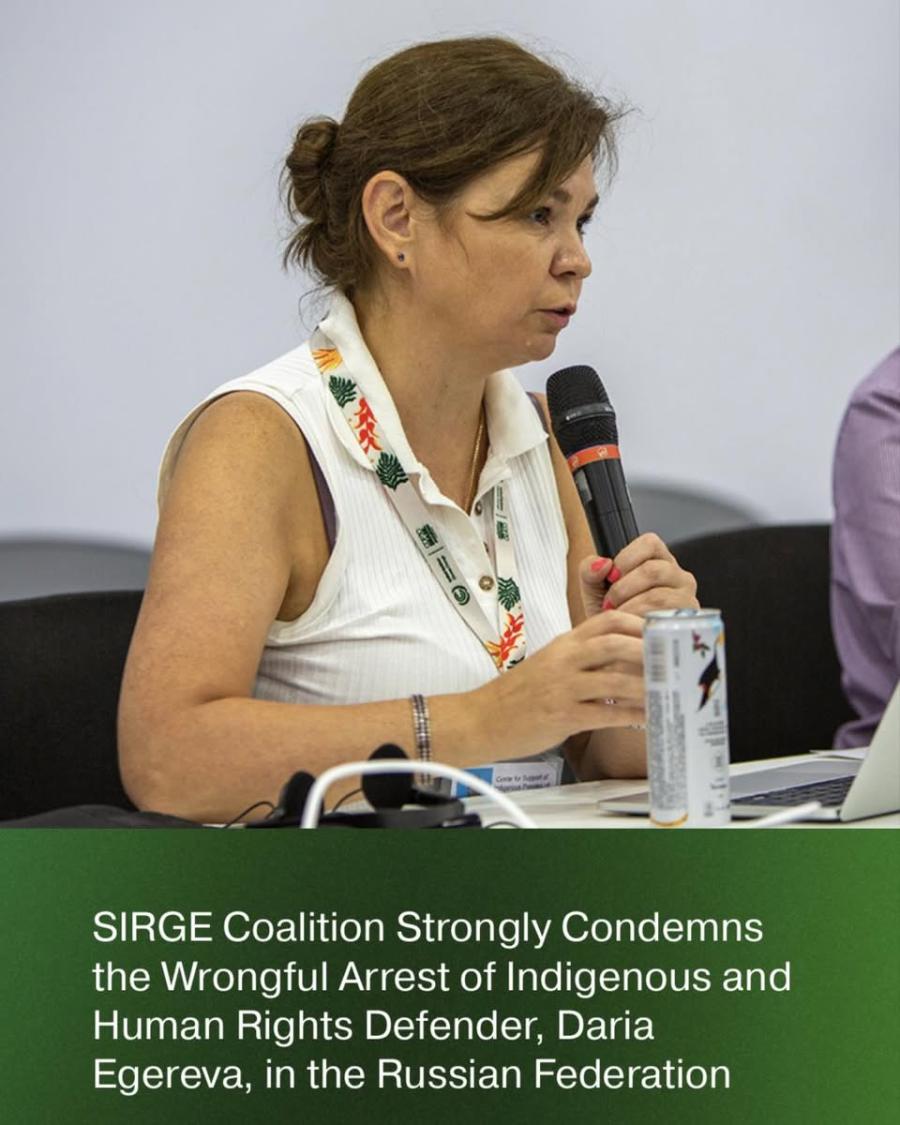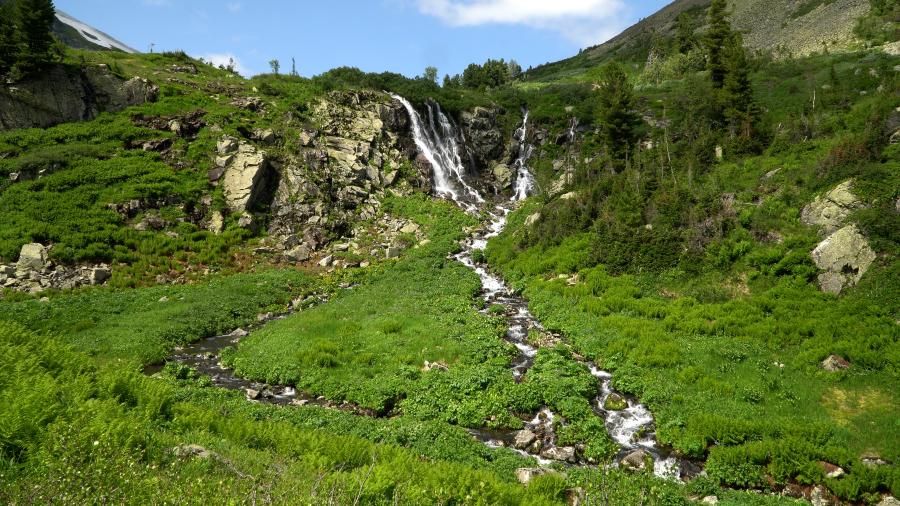Contemporary reindeer herding in Siberia varies greatly from region to region, due to influences of different environments, histories, and ethnic characteristics. The Evenki, formerly known as the Tungus, practice taiga-type reindeer herding—also known as Evenki- or Tungus-type herding—in south Siberia’s mountainous zones.
While scholars have made fine distinctions between the Evenki type of reindeer herding and the Sayan type practiced by the Tozhu, Tofa, and Dukha, these two types are more similar than different. (Vasilevich and Levin) Both are characterized by the use of reindeer for transportation purposes—as pack and riding animals—and for their milk products. Neither group farms reindeer for meat; in fact, the Evenki slaughter deer for food only in exceptional cases. Instead, using the deer as transport intensifies hunting and, consequently, increases the yield of game.
Like the Sayan, Evenki reindeer herding relies on small herds, with an optimal herd size of 20 to 30 deer per family. By comparison, the large-scale tundra reindeer herders who raise the animals primarily for meat have as many as 1,000 deer or more in one herd. Tundra-type herding is more extensive, with less contact between the herders and livestock. On the other hand, Evenki and Sayan reindeer herding is based on a closer relationship between the reindeer and the herder. As a result, Evenki and Sayan reindeer are tamer than tundra reindeer. Most deer in Evenki herds are used to being saddled and either ridden or burdened with a pack, and the does are used to being milked. The deer come to depend on specialized technologies requiring intensive and intimate contact between humans and deer, such as smudge pots to protect against midges and other biting insects, provision of salt, and protection from predators; thus, they never stray far from human settlements.
This tamer character of Evenki taiga deer could also be the result of a longer period of domestication. Evenki-type reindeer herding originated earlier than large-scale tundra herding. Many features indicate it is related to Sayan reindeer herding, which many researchers believe is the oldest form of reindeer herding and is associated with the earliest domestication of the reindeer by the Samoyedic taiga population of the Sayan Mountains at the turn of the first millenium A.D. (see page 44 this issue). The Sayan region was apparently the origin of the economic and cultural complex of reindeer hunters-herdsmen that we now see among the various Evenki groups and the peoples of the Sayan area. The ancestors of modern Evenki groups inhabited areas adjacent to the Sayan Mountains, and it is highly likely that they took part in the process of reindeer domestication along with the Samoyedic population. However, unlike the Sayan ethnic groups, which still live almost exclusively in the area of the Eastern Sayan mountains, the Evenkis left their Native land after domesticating their reindeer and over the last several centuries have dispersed across almost the entire taiga zone of Siberia. The domestication of the reindeer, a species ideally adapted to the rugged mountainous taiga, made this large-scale migration possible.
By the time Russians discovered and started conquering Siberia, the Evenki were already the region’s most widely dispersed ethnic group. They are also the most populous of all the Indigenous Small-Numbered Peoples of Siberia. Different groups of Evenki, totaling some 30,000 according to the 1989 census, are spread out over an area of approximately 7 million square kilometers, ranging from the coast of the Sea of Okhotsk in Russia’s Far East, throughout southeastern Siberia, and up the entire length of the Yenisei River to the tundra regions of the Taimyr Peninsula.
By the beginning of the 20th century, there were some 20 distinct Evenki subgroups, varying somewhat in ethnic and cultural features, some having completely lost contact with others. The national character and ethnic self-awareness are still distinctly present in all groups whose lifestyle is based on traditional reindeer herding. In contrast, if a part of the population settled in a location incompatible with reindeer herding, changes in their economic activity resulted in changes in their sense of ethnic identity. One striking example of this adaptation is found in the steppe regions of southern Transbaikalia, where under the influence of Buryat and Mongol pastoralists the Evenki people herded horses, cows, sheep, and goats. As a result, they have largely adopted the language and culture of the Mongolian- and Buryat-speaking populations, and most of them have stopped considering themselves Evenki.
The 20th century has seen intensive industrial development throughout Siberia. Environmentally destructive activities such as mineral resource and fossil fuel extraction, timber operations, road construction, and the construction of new settlements have destroyed pastures and grazing grounds necessary for reindeer herding. This loss creates serious problems for reindeer-herding economies and, consequently, for reindeer-herding Evenki cultures. The fate of the Evenki reindeer herders of the Higher Bureya Region of the Khabarovsk Krai in Russia’s Far East presents a sad but instructive example. During the last quarter of the 20th century, destruction of grazing grounds made reindeer herding impossible. The destruction of the Evenki traditional culture and a decline in the use of the Evenki language soon followed, along with associated feelings of pessimism and depression among the former reindeer herders.
The story of the Higher Bureya Evenki is convincing proof that reindeer herding still plays the key role in Evenki culture, just as it did centuries ago, and the preservation of the reindeer-herding way of life is essential for these people to survive as an ethnic group. Fortunately, local and regional administrations are trying to resolve the acute problems that reindeer herding faces. The future depends in large part on the decisions made by authorities, who must act wisely and find ways to reconcile industrial development with the traditions of Evenki reindeer herding.
References and further reading
Vainshtein, S.I. (1970).
Vainshtein, S.I. (1971). Problema proiskhozhdeniya olenevodstva v Evrazii, II: Rol’ Sayanskogo ochaga v resprostranenii olenevodstva v Evrazii (The Problem of the Origins of Reindeer Herding in Eurasia, Part II: The Role of the Sayan Center in the Diffusion of Reindeer Herding in Eurasia). Sovetskaya Etnografiya 5, pp 37-52.
Vasilevich, G.M. and Levin, M.G. (1951). Tipy olenevodstva i ikh proiskhozhdenie (Types of Reindeer Herding and Their Origins). Sovetskaya Etnografiya 1, pp 63-87.



